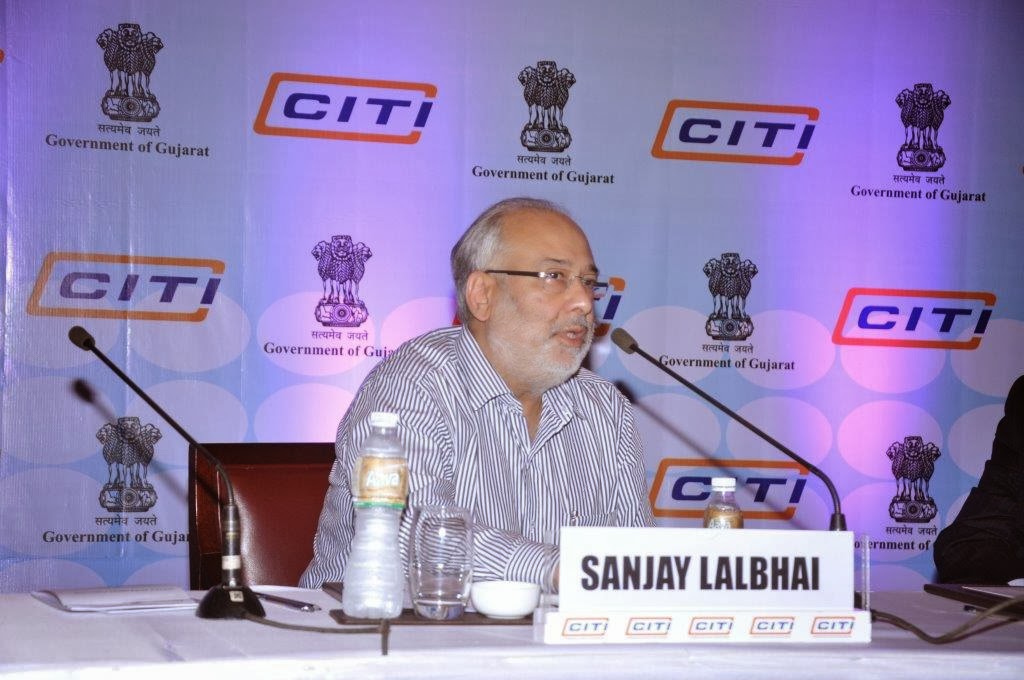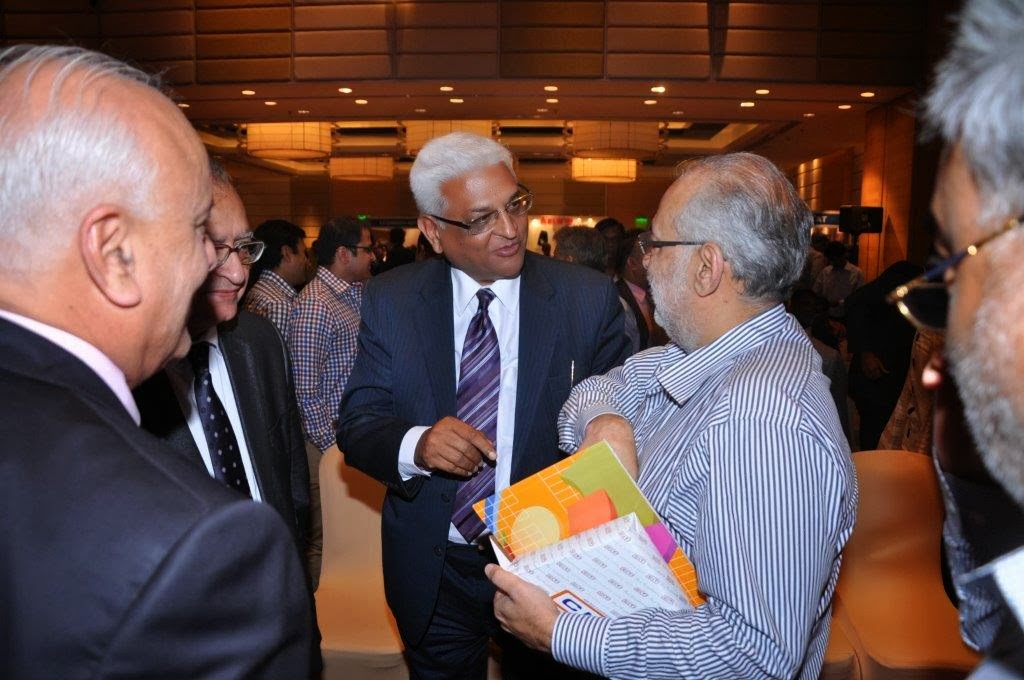 At a recent CITI conclave held in Ahmedabad, Gujarat, the doyen of the Indian textile industry, Sanjay Lalbhai, CMD of textile conglomerate Arvind spoke at length about India’s position in global textile market and how we can race ahead to achieve the ‘Brand India’ status. Speaking to Arvind Singhal, Chairman, Technopak Advisors, he answered several queries related to state of textile industry, Lalbhai said, “Indian textile companies need to go vertical and also set-up large scale apparel manufacturing plants, if India wants to increase its market share in the global textile trade.”
At a recent CITI conclave held in Ahmedabad, Gujarat, the doyen of the Indian textile industry, Sanjay Lalbhai, CMD of textile conglomerate Arvind spoke at length about India’s position in global textile market and how we can race ahead to achieve the ‘Brand India’ status. Speaking to Arvind Singhal, Chairman, Technopak Advisors, he answered several queries related to state of textile industry, Lalbhai said, “Indian textile companies need to go vertical and also set-up large scale apparel manufacturing plants, if India wants to increase its market share in the global textile trade.”
Need to gain competitiveness
Singhal pointed out that in the early ’90s, China’s and India’s textile industry were not  too far apart. However, today China’s industry is seven times that of India’s. Explaining the reason behind this Lalbhai said world trade in 2003 was $430 billion (over Rs 25,00,000 crores) by 2012 it was $750 billion dollars (over Rs 45,00,000 crores). It’s likely to be $1,150 billion (over Rs 69,00,000 crores) by 2020. In 2003, we were 3 per cent of world trade, by 2012 we were 4.5 per cent, while China was 17 per cent in 2003, now its 33 per cent. The reason behind this is that India has not been able to think ‘scale’. We have not gone for ‘verticalisation’.
too far apart. However, today China’s industry is seven times that of India’s. Explaining the reason behind this Lalbhai said world trade in 2003 was $430 billion (over Rs 25,00,000 crores) by 2012 it was $750 billion dollars (over Rs 45,00,000 crores). It’s likely to be $1,150 billion (over Rs 69,00,000 crores) by 2020. In 2003, we were 3 per cent of world trade, by 2012 we were 4.5 per cent, while China was 17 per cent in 2003, now its 33 per cent. The reason behind this is that India has not been able to think ‘scale’. We have not gone for ‘verticalisation’.
He stressed on the need to grab business away from China, especially when China has become more expensive than India. “We still depend on Bangladesh, Cambodia, Vietnam, Sri Lanka to convert our fabrics into garments. Major buyers in the US and Europe want to shift business from China to India but they don’t know where the conversion to the final garment will happen. Bangladesh is facing compliance issues. So things are uncertain there. India should take up garmenting seriously and build scale,” he asserts.
He also emphasized that we have to take advantage of the domestic market and create scale. “It’s necessary to have scale in value based products. We require a more competitive framework in raw materials. There are companies in raw materials where scale is not an issue. Even with cellulosic fibers there are huge opportunities in women’s wear. We can bring joint ventures into the country,” he explains.
Finding of textile sector’s strengths
Despite Indian textiles industry being the largest employer, contributing to the GDP, it has not been able to create good value to its investors. “It is the joint effort of players put together that textile should give value to its investors. People who are investing in our companies want good returns. These are the challenges and the problems which the textile industry has faced and I would say all of us have faced,” he opines.
Elaborating on creating an “asset light” model, he said, “There are so many entrepreneurs in India today who are willing to invest in a spinning capacity, so many investors are ready to invest in our weaving capacity. What we have started doing is, when an entrepreneur approaches us with investment proposal, we say, we assure you 18 per cent return on your investment. Now where would you get 18 per cent return, it is not that simple.
However, luckily, he says, we are the most supported industry in the country. “We have got good support from the government. We should always invest in value added areas like processing, distributions; invest in creating a capability of products and design innovations, becoming more customers centric. We should look at the development of clusters like Tirupur, Surat or Bhiwandi in the textile industry. We should look at creating an asset light model, so that I can go back to my investor and say now rate my textiles at par with brand & retail. We should rethink and if the Top 20 companies do not rethink this the industry will not get re-rated. It is a joint responsibility,” he avers.
Lalbhai said that there are companies in China which are trading at big PE. There are hardly any companies which are trading big on PE. It is not that these companies in China are very different and the idea cannot be replicated here. Possibilities are everywhere, brand India will only emerge if we become customer centric. He rued that our mentality is more towards creating assets, which is the easiest thing to do. We always look to invest in modern machinery, get subsidy from the government, run it as easily as possible.
He stressed on the need to bring in professionalism into the business. “You have to create value and bring in the best minds. You have to create a younger organisation. You can’t create scale without empowering. This is what has to be done for creating value additions in textiles,” he summed up.












